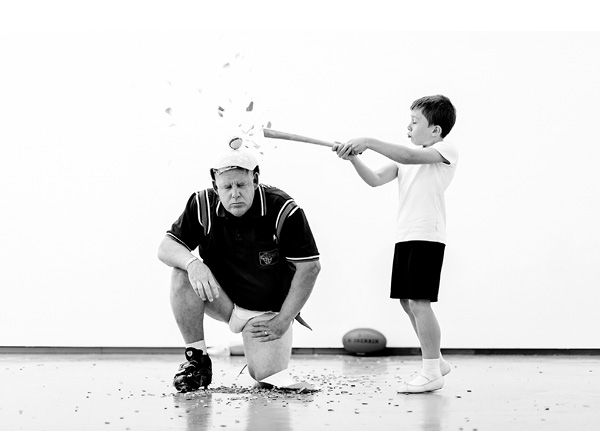
CONSIDERED COMPULSION
first performed on June 25, 2013
Notsuoh, Houston, TX
performed six times in 2013
JOHN G. BOEHME
Victoria, B.C., Canada
529598189j529598189o529598189h529598189n529598189g529598189b529598189o529598189e529598189h529598189m529598189e529598189@529598189s529598189h529598189a529598189w529598189.529598189c529598189a
finearts.uvic.ca/~jgboehme/
CONSIDERED COMPULSION
JOHN G. BOEHME
As a widespread ceremonial ritual of the industrial age, sport is remarkable for its ability to express two apparently contradictory sets of qualities: on the one hand, modernity, abstraction, efficiency, science, concept, and mind; on the other, the past, archaism, worship, emotionality, sex and the body.
—Varda Burstyn, The Rites of Men: Manhood, Politics and the Culture of Sport
My practice has explored sport as a metaphor for construction, projection, and destruction of identity, utilizing sport as an armature for cultural and national identity. This new series of works involved the creation of sports equipment initially from ceramic materials, arranged in a gallery installation and finally utilized in a performance art context in Houston, Belgium, in Brisbane, Melbourne and Sydney, Australia. The series in Australia juxtaposed the gesture of ballet through eight-year-old performer Beauregard Boehme completing ballet exercises, routines and sport, highlighting the abject, the compulsive and the humorous with lard on the head (fat head), sunflower seeds (spreading of seed), ceramic athletic supports and using a continuous positive airway pressure (CPAP) machine, a device that pumps air through the nose, making voice difficult.
Professional sports has paralleled the emergence of capitalism, developing recreational activity into a secular religion. Sports are the arena where social and political tensions are remorselessly played out. The language of sports is the language of war, struggle, and conquest. Terms such as offense, defense, and sudden-death overtime, provide evidence of the codified nature of its conflict.
The adoration of the hero makes sports the sanctioned site for eroticism, and the idealization of the body. Professional athletes have used the cultural space awarded to them to articulate views on class, race and economic struggles. Obsessive “fan” culture serves as a release for otherwise unexpressed communal energy of infinite potential where the underdog might triumph. Sport can be precarious, dangerous and seductive—all qualities embodied in works of ceramic and glass.
Channeling the historical connections between art and sports, manifest in society’s idealization of the body and its attendant homoerotic fetishism, this program interrogates not specific contests or competitions, but rather those subjects within sports that “jump the hurdle” and “cross the line.”